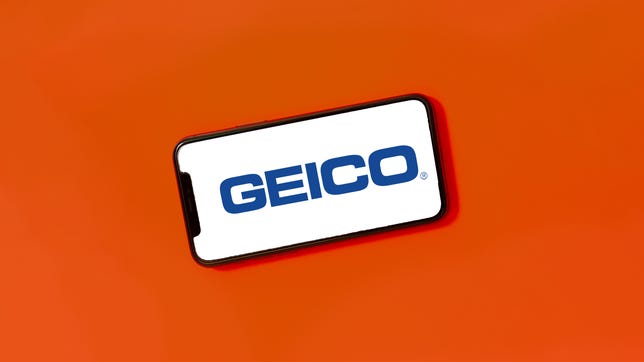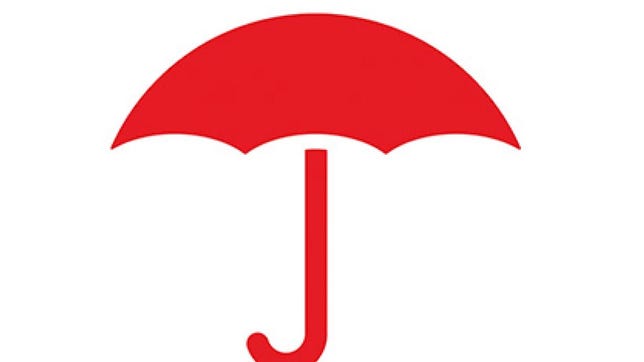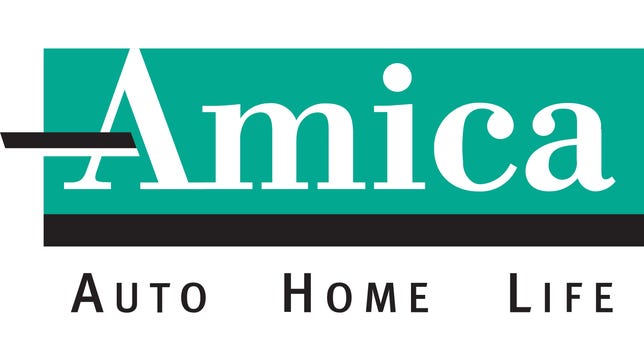From national carriers to regional boutique insurers, hundreds of insurance companies exist out there. With so many to select from, how do you weigh your options and decide which company is right for you? That’s what we’re here to answer.
Finding the best car insurance company, policy and price hinge on a variety of factors — and the vehicle you drive and the state you live in also play a role in how much you’ll pay for car insurance coverage. The average annual premium for full coverage is $1,771, according to Bankrate, but most of our top car insurance picks have average premiums that are hundreds of dollars less.
If you want to make sure you have the best car insurance coverage and rates possible, here are our recommendations for the best auto insurance companies.
Best car insurance companies

 \n ","topic":"","ttag":"","searchDim":"article-body|listicle|image","variant":"article-body|listicle|image","viewguid":"","event":"listicle|image|1","correlationId":"","_destCat":"https:\/\/www.bankrate.com\/insurance\/companies\/geico\/?utm_origin=cnet","productName":"Geico Auto Insurance","formatType":"IMAGE","location":"LIST","position":1,"sku":"CNETGeicoAuto","dwLinkTag":"article-body|listicle|image","selector":"#article-body #listicle-c34861cf-50b8-48a0-808b-e5c61889d63b .itemImage"}}” target=”_blank”>
\n ","topic":"","ttag":"","searchDim":"article-body|listicle|image","variant":"article-body|listicle|image","viewguid":"","event":"listicle|image|1","correlationId":"","_destCat":"https:\/\/www.bankrate.com\/insurance\/companies\/geico\/?utm_origin=cnet","productName":"Geico Auto Insurance","formatType":"IMAGE","location":"LIST","position":1,"sku":"CNETGeicoAuto","dwLinkTag":"article-body|listicle|image","selector":"#article-body #listicle-c34861cf-50b8-48a0-808b-e5c61889d63b .itemImage"}}” target=”_blank”>


Sarah Tew/CNET
The top-scoring auto insurance provider overall was Geico, reporting high customer satisfaction levels in all regions of the country. This insurance carrier is also ranked among the cheapest car insurance coverage providers (and a premium can be a huge expense). Its customers give it superior ratings for great service and support, along with some of the most reasonable insurance prices.
Geico’s clever commercials have made it one of the best-known car insurance companies in the country, and it ranks high in overall customer satisfaction and auto claims satisfaction, according to J.D. Power surveys. It receives fewer consumer complaints than other major insurers, and has the highest financial strength rating from AM Best. That is, if you need something besides the gecko to convince you.
Check out our full review on Geico Auto Insurance.

 \n ","topic":"","ttag":"","searchDim":"article-body|listicle|image","variant":"article-body|listicle|image","viewguid":"","event":"listicle|image|2","correlationId":"","_destCat":"https:\/\/www.bankrate.com\/insurance\/companies\/travelers\/?utm_origin=cnet","productName":"Travelers Insurance Auto Insurance","formatType":"IMAGE","location":"LIST","position":2,"sku":"CNETTravelers","dwLinkTag":"article-body|listicle|image","selector":"#article-body #listicle-4f88cd77-f0f2-4638-b856-7bf4ba1b71f7 .itemImage"}}” target=”_blank”>
\n ","topic":"","ttag":"","searchDim":"article-body|listicle|image","variant":"article-body|listicle|image","viewguid":"","event":"listicle|image|2","correlationId":"","_destCat":"https:\/\/www.bankrate.com\/insurance\/companies\/travelers\/?utm_origin=cnet","productName":"Travelers Insurance Auto Insurance","formatType":"IMAGE","location":"LIST","position":2,"sku":"CNETTravelers","dwLinkTag":"article-body|listicle|image","selector":"#article-body #listicle-4f88cd77-f0f2-4638-b856-7bf4ba1b71f7 .itemImage"}}” target=”_blank”>


Travelers Insurance
Travelers offers car insurance policies that you can customize based on your needs. Rather than upselling users, Travelers offers a host of resources (in the form of blog posts) designed to educate motorists prior to purchasing coverage. An informed customer is a happy customer.
Like most of the companies on this list, Travelers offers savings on insurance bundles, giving you up to 13% off home and car policies under the same roof. So, if you’re able to bundle your auto and homeowners or renters insurance, you can save a pretty penny. Travelers also offers discounts for safe driving, multicar policies, becoming a loyalty member, having hybrid and electric vehicles, paying on time, completing driver training programs and being a good student.

 \n ","topic":"","ttag":"","searchDim":"article-body|listicle|image","variant":"article-body|listicle|image","viewguid":"","event":"listicle|image|3","correlationId":"","_destCat":"https:\/\/www.bankrate.com\/insurance\/companies\/usaa\/?utm_origin=cnet","productName":"USAA Auto Insurance","formatType":"IMAGE","location":"LIST","position":3,"sku":"CNETUSAA","dwLinkTag":"article-body|listicle|image","selector":"#article-body #listicle-883649c5-6830-4fe5-8b7f-0f407dddf0b5 .itemImage"}}” target=”_blank”>
\n ","topic":"","ttag":"","searchDim":"article-body|listicle|image","variant":"article-body|listicle|image","viewguid":"","event":"listicle|image|3","correlationId":"","_destCat":"https:\/\/www.bankrate.com\/insurance\/companies\/usaa\/?utm_origin=cnet","productName":"USAA Auto Insurance","formatType":"IMAGE","location":"LIST","position":3,"sku":"CNETUSAA","dwLinkTag":"article-body|listicle|image","selector":"#article-body #listicle-883649c5-6830-4fe5-8b7f-0f407dddf0b5 .itemImage"}}” target=”_blank”>


USAA
If we were judging solely on satisfaction, the United Services Automobile Association would take the top spot among our best list here. What affects the USAA’s ranking is that its scope is narrower than those of most other auto insurers, as the company only offers coverage to service members, veterans and their families.
That said, USAA is one of the most cost-effective insurers out there, offering prices that even beat Geico’s. Customers who switch save an average of $725 a year. Also, if you bundle home and auto insurance (or renters and auto insurance), you can save up to 10%.

 \n ","topic":"","ttag":"","searchDim":"article-body|listicle|image","variant":"article-body|listicle|image","viewguid":"","event":"listicle|image|4","correlationId":"","_destCat":"https:\/\/www.bankrate.com\/insurance\/companies\/the-hartford\/","productName":"The Hartford Auto Insurance","formatType":"IMAGE","location":"LIST","position":4,"sku":"CNETHartford","dwLinkTag":"article-body|listicle|image","selector":"#article-body #listicle-dd87aa63-2f95-4d0c-b807-6fbebc64bfd0 .itemImage"}}” target=”_blank”>
\n ","topic":"","ttag":"","searchDim":"article-body|listicle|image","variant":"article-body|listicle|image","viewguid":"","event":"listicle|image|4","correlationId":"","_destCat":"https:\/\/www.bankrate.com\/insurance\/companies\/the-hartford\/","productName":"The Hartford Auto Insurance","formatType":"IMAGE","location":"LIST","position":4,"sku":"CNETHartford","dwLinkTag":"article-body|listicle|image","selector":"#article-body #listicle-dd87aa63-2f95-4d0c-b807-6fbebc64bfd0 .itemImage"}}” target=”_blank”>


The Hartford
The Hartford is an insurance carrier offering superb coverage and excellent customer care, but it isn’t for all drivers. The Hartford’s car insurance plan is exclusively for drivers who are members of the American Association of Retired Persons.
AARP members get a plethora of benefits, including insurance discounts (up to 10% off your premium), lifetime car repair assurance, car replacement if you total your car, as well as “recover care,” which will pay up to $2,500 for transportation, cooking and cleaning if you’re injured in a car accident and can’t perform such tasks.

 \n ","topic":"","ttag":"","searchDim":"article-body|listicle|image","variant":"article-body|listicle|image","viewguid":"","event":"listicle|image|5","correlationId":"","_destCat":"https:\/\/www.bankrate.com\/insurance\/companies\/amica\/","productName":"Amica Auto Insurance","formatType":"IMAGE","location":"LIST","position":5,"sku":"CNETAmica","dwLinkTag":"article-body|listicle|image","selector":"#article-body #listicle-17b3b9c8-fc5e-45f7-a3d3-1ca45a21571a .itemImage"}}” target=”_blank”>
\n ","topic":"","ttag":"","searchDim":"article-body|listicle|image","variant":"article-body|listicle|image","viewguid":"","event":"listicle|image|5","correlationId":"","_destCat":"https:\/\/www.bankrate.com\/insurance\/companies\/amica\/","productName":"Amica Auto Insurance","formatType":"IMAGE","location":"LIST","position":5,"sku":"CNETAmica","dwLinkTag":"article-body|listicle|image","selector":"#article-body #listicle-17b3b9c8-fc5e-45f7-a3d3-1ca45a21571a .itemImage"}}” target=”_blank”>


Amica Mutual Insurance
Founded in 1907 in Rhode Island, Amica is the oldest mutual car insurer in the US and completely owned by its policyholders. An excellent choice for New England residents, Amica has outstanding financial strength and high customer satisfaction scores, particularly when it comes to auto claims.
This insurer does it all, from flood, condo and life insurance to auto, home, retirement and small business coverage. It offers full coverage for an average premium of $1,495 per year, coming out below the $1,700-plus industry average for full coverage, according to Bankrate. This carrier doesn’t operate in Hawaii.
The best car insurance providers, compared
| Company | Best for | Avg. annual premium for full coverage* | J.D. Power Claims Satisfaction** | A.M. Best Financial Strength Rating*** |
|---|---|---|---|---|
| Geico | Most drivers | $1,297 | 881 | A++ |
| Travelers | Discounts | $1,447 | 871 | A++ |
| USAA | Military perks | $1,209 | 909 | A++ |
| The Hartford | AARP rates and rewards | $2,002 | 905 | A++ |
| Amica | Highest customer satisfaction | $1,495 | 895 | A+ |
*Overall average annual premiums for full coverage are $1,771.
**Industry average is 880.
***A.M. Best financial strength rating scale runs from D (lowest) to A++ (highest).
FAQs
What’s the best car insurance?
Geico, Travelers, USAA, The Hartford and Amica are our top car insurance picks for most drivers. High customer satisfaction scores and competitive rates are among the reasons we picked these carriers, but they aren’t the only good options out there. It may be worth looking into other well-known insurance providers, like Allstate, State Farm and Progressive. While these carriers didn’t beat out our top picks, depending on where you live and the type of coverage you’re interested in, they may be good options.
Moreover, we’ve compiled additional lists based on different metrics. Read our best car insurance recommendations for cheapest car insurance, military members and teens and young drivers.
Does the US state you live in matter when picking auto insurance?
Yes. When shopping for car insurance, you’ll notice that rates vary by region and that state laws dictate which coverage is required on your policy and what the minimum limits are, as well. There are plenty of good insurance companies that operate regionally or only in a select amount of states.
For example, Erie Insurance and Auto-Owners Insurance are top-rated carriers with excellent rates, a low number of complaints and superb customer satisfaction, but they operate in fewer states than other major insurers. Auto-Owners offers coverage in only 26 states, while Erie offers it in just 12.
What are the different types of car insurance coverage?
Coverage types may roughly be split into three categories: 1. Mandatory; 2. Often required; 3. Optional. Note that this list does not include all types of coverage offered by carriers — these are just the most common.
Mandatory coverage
Just about all states require the two types of coverage below, which do not cover damage to your own car or property.
- Bodily injury liability protection: This coverage pays for injuries to others caused by the policyholder and other drivers listed on the policy.
- Property damage liability protection:This coverage pays for damage that policyholders cause to another’s property. Most prominently, this is aimed at other cars, but it can also include other personal property like fences or mailboxes.
Often required
Many states also require these two types of coverage.
- Personal injury protection: This coverage pays for the medical costs and lost wages of the driver and passengers of the policyholder’s car if injury occurs, up to the policy’s limits, regardless of fault.
- Uninsured or underinsured motorist coverage: This coverage covers you up to the policy’s limits when an underinsured or uninsured motorist causes an accident.
Optional coverage
State-mandated insurance coverage is the minimum for driving, and typically it doesn’t include damage to your car, which requires additional coverage. If your car is financed, your lender may require you to carry full coverage, meaning both comprehensive and collision.
- Collision coverage: This coverage pays for damage to your vehicle in an accident resulting from a collision between your car and another car or an object.
- Comprehensive coverage: This coverage pays for damage to your car caused by an event other than collision. This includes theft, fire, flood, hail and vandalism.
What kind of car insurance coverage does your state legally require you to have?
In most states, bodily injury liability coverage and property damage liability are necessary to drive, but you’ll want to check the specifics of insurance premiums with auto insurance providers where you live. An insurance agent can help guide you through this process so that you know exactly what coverage you may need.
How should you decide on how much coverage to buy?
Most car insurance companies offer different policies that cover a variety of damages and risks, so your first step should be to determine your risks and how you can compensate for them.
If an accident occurs, car insurance policies generally offer bodily injury liability protection and property damage protection.
From there, you may add other coverage types, like personal injury protection, uninsured motorist coverage or collision coverage. You can also choose to increase the dollar amount of coverage and include things like roadside assistance. Some auto insurance carriers offer comprehensive coverage, which will insure your vehicle from theft or from damage caused by other events, like fires.
“Having adequate auto insurance coverage is both smart and prudent to ensure you and your family are financially protected from a catastrophic loss,” said Mark Friedlander, director of corporate communications at the Insurance Information Institute. “Comparison shopping when seeking insurance coverage is time well spent as premiums could vary by hundreds of dollars between carriers depending on numerous factors.”
What factors influence car insurance rates? Can you get discounts?
Auto insurance rates may ultimately be determined by personal factors, such as where you live, your driving record, your credit score and the type and age of vehicle you drive. However, insurance companies offer numerous discount options that you can take advantage of if you qualify.
For example, you may lower your insurance coverage costs if you maintain a safe driving record or work on your credit score. Bundling your car insurance policy with life, homeowners or renters insurance is another great way to save money. Young drivers might save money on their higher premium costs by demonstrating good grades.
Methodology
CNET reviews insurance carriers and products by exhaustively comparing them across set criteria developed for each category. For auto insurance, we examine average annual premium rates for full coverage, consumer complaints, collision repair scores, the carrier’s financial strength, auto claims satisfaction and overall customer satisfaction. Our data comes from a multitude of sources.
Auto insurance rates come from Bankrate, which gathers data using Quadrant Information Services. We also use both J.D. Power annual surveys that collect data on customer auto claims satisfaction and overall customer satisfaction.
Consumer complaints are taken from the National Association of Insurance Commissioners (NAIC), which collects consumer complaints across states, indexing complaints on a scale that takes into account the industry average. We collect the financial strength rating of each carrier from the A.M. Best Rating. Lastly, we collected collision repair scores from the Crash Network Insurer Report Card, which collects data from collision repair professionals, including mechanics, to gauge the quality of collision claims service from insurance carriers.
More car insurance recommendations
The editorial content on this page is based solely on objective, independent assessments by our writers and is not influenced by advertising or partnerships. It has not been provided or commissioned by any third party. However, we may receive compensation when you click on links to products or services offered by our partners.


